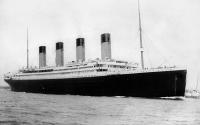Masonry on the Titanic
06 June 24
A great deal of publicity has been made about the sinking of the passenger liner Titanic during her maiden voyage at 2.30 am on 15 April 1912 and 2012 was the 100th anniversary of that tragedy.
Belfast, where the ship was built, has been planning towards this anniversary for the past five years and there have been numerous articles, television features and special building projects in Belfast about the Titanic. But very little has been said about the strong masonic ties with that disastrous event.
Of the 2,223 passengers on board, more than 1,500 died due in part to the lifeboat capacity being for only 1,170 people. The ship was considered to be unsinkable. The Director of the Library and Museum of the United Grand Lodge of England investigated the stories of known Freemasons on board the ship but the records do not show any masons from New South Wales who were victims of the voyage.
Among the English members who perished was the managing director of the Vacuum Oil Company, Howard Brown Case, who was establishing operations in England. He had lived at Ascot with his wife and four children, was travelling in a first-class cabin, and died helping others into lifeboats. He was a member of America Lodge No 3368, having joined in June 1909.
Percy Cornelius Taylor, a cellist in the ship’s orchestra, was a Past Master of Musgrave Lodge No 1597, meeting at Hampton Court. He died aged 32, together with the rest of the orchestra. Two stewards based in Liverpool, Robert Arthur Wareham, 36, from Toxteth Lodge No 1356 and Arthur Lawrence, 35, from Neptune Lodge No 1264 also died.
Henry Price Hodges, a 50-year-old salesman of musical instruments from Southampton and a second-class passenger, was a member of Caulsentum Lodge No 1461 and the Royal Gloucester Lodge No 130, died. Pierre Guiseppe Boche a 43-year-old waiter, originally from Aosta in Italy had moved to London. He was a member of Loggia Italia No 2687 and ColumbiaRAC Chapter No 2397.
One Freemason who survived was the Third Officer, Herbert John Pitman, a member of Abbey Lodge No 3334 in Hatfield. He helped to load and lower a lifeboat and rowed it to a nearby ship, Carpathia. He returned to the sea in other liners and served in the Merchant Navy during the Second World War.
Four American casualties were recorded. Henry Harris, a New York theatre manager, was a member of Munn Lodge No 100; Frank Millet, vice chairman of the Fine Arts Committee in Washington DC, and a member of Kane Lodge No 454; Alexander Holverson was a member of Transportation Lodge No 842; and Oscar Scott Woody, a clerk in the ship post office, and a member of Acacia Lodge No 16 in Virginia.
Obviously, some other Freemasons either survived or perished on the Titanic. Eyewitness accounts of the drama were conflicting. Almost all of the survivors in the lifeboats stated that the ship did not break in two as it sank, but a minority claimed that it did. This minority appears to have been justified when the wreck was discovered in 1985, as two sections were on the sea bed. Conflicting accounts were given of the music played by the orchestra as the ship went down, but it is considered most likely that the last piece was ‘Nearer my God to Thee’, played by the leader of the orchestra, Wallace Hartley. He finished the piece, replaced his violin in its case, which he strapped to his chest as he was engulfed by the sea.
Many variations have been made of the hymn over the years, but it was the one best known by Hartley that he would have played. He knew the tune ‘Propior Deo’ written by Bro Sir Arthur Sullivan and included in the Methodist Hymn Book.

Winter 2012 Freemason.


